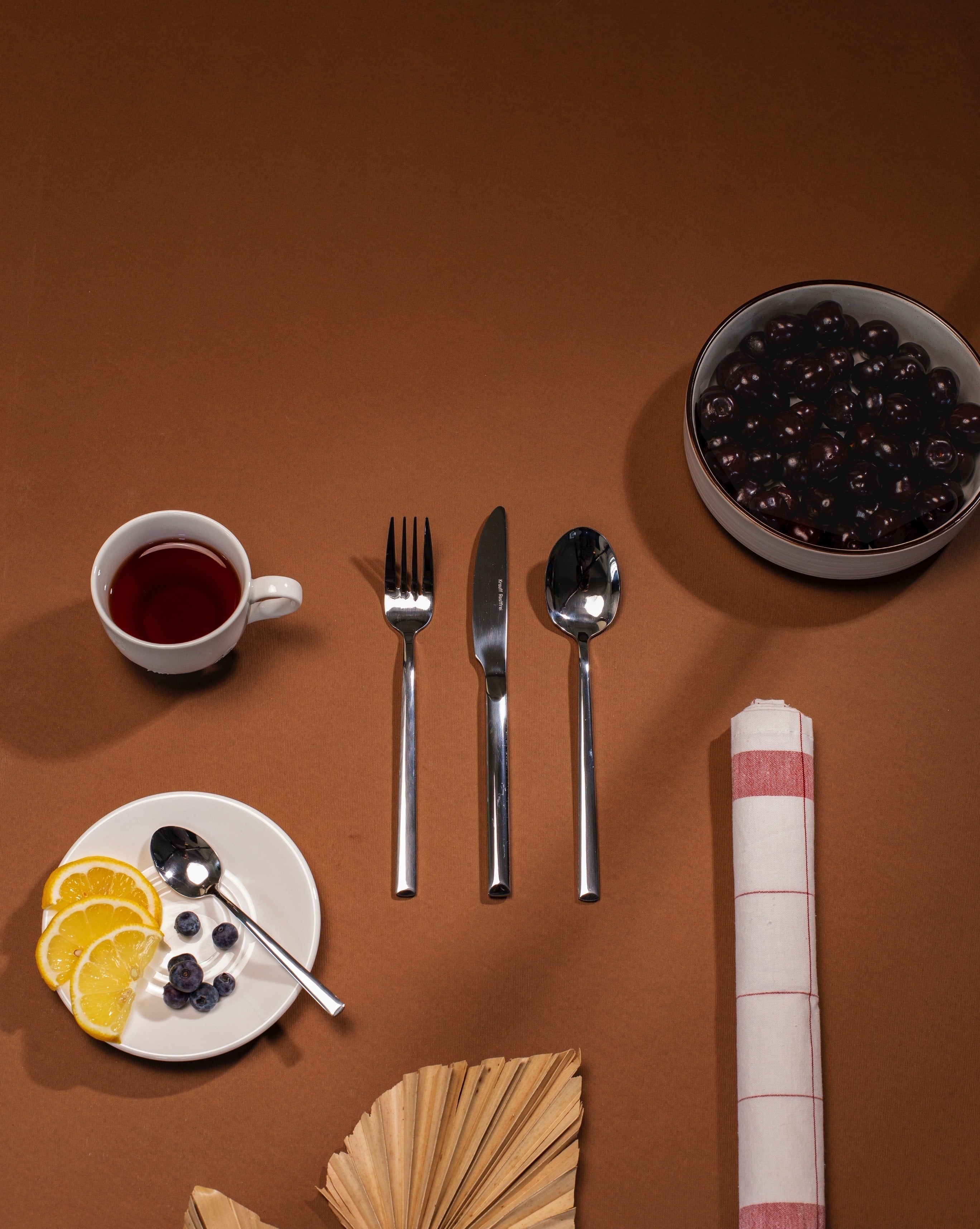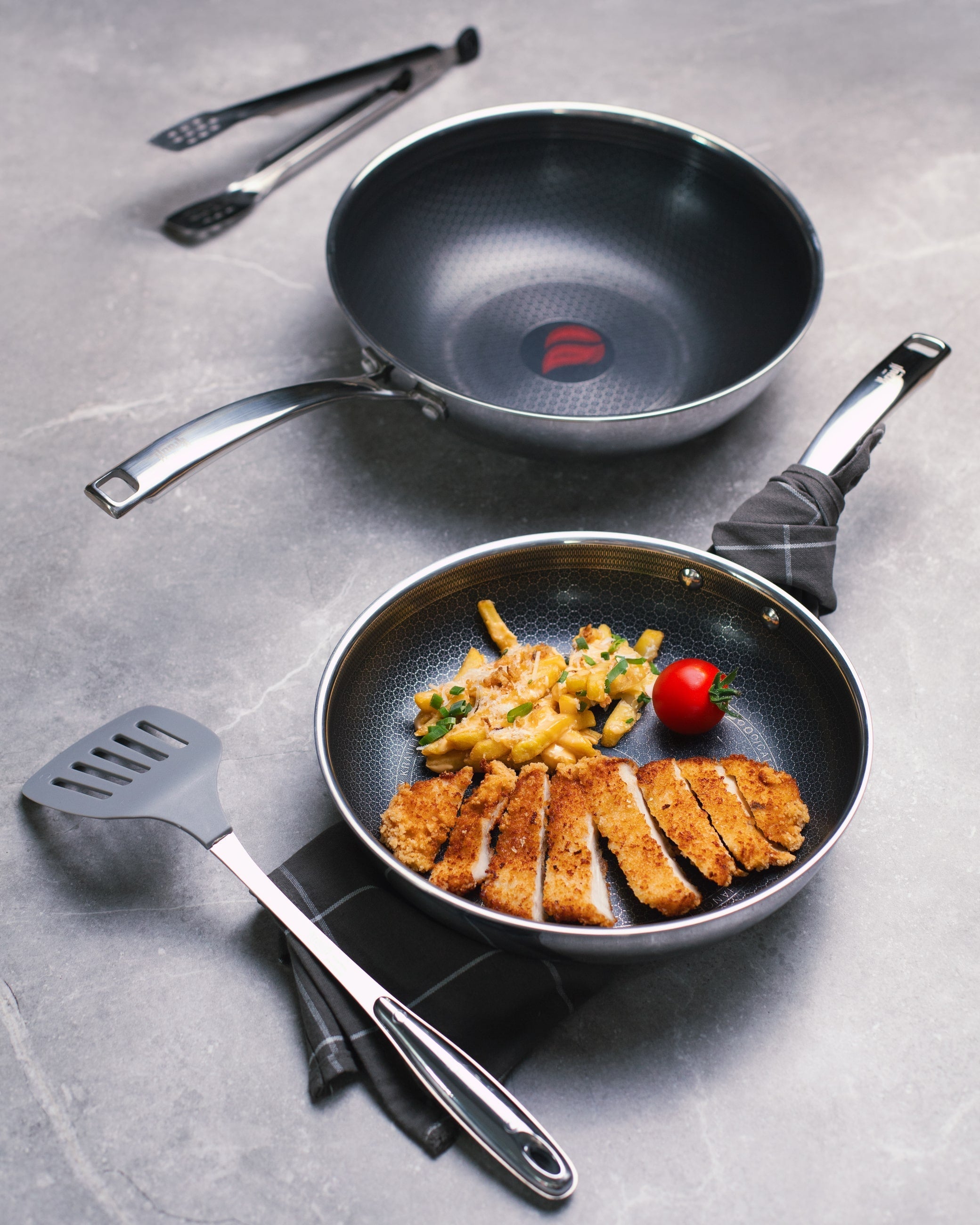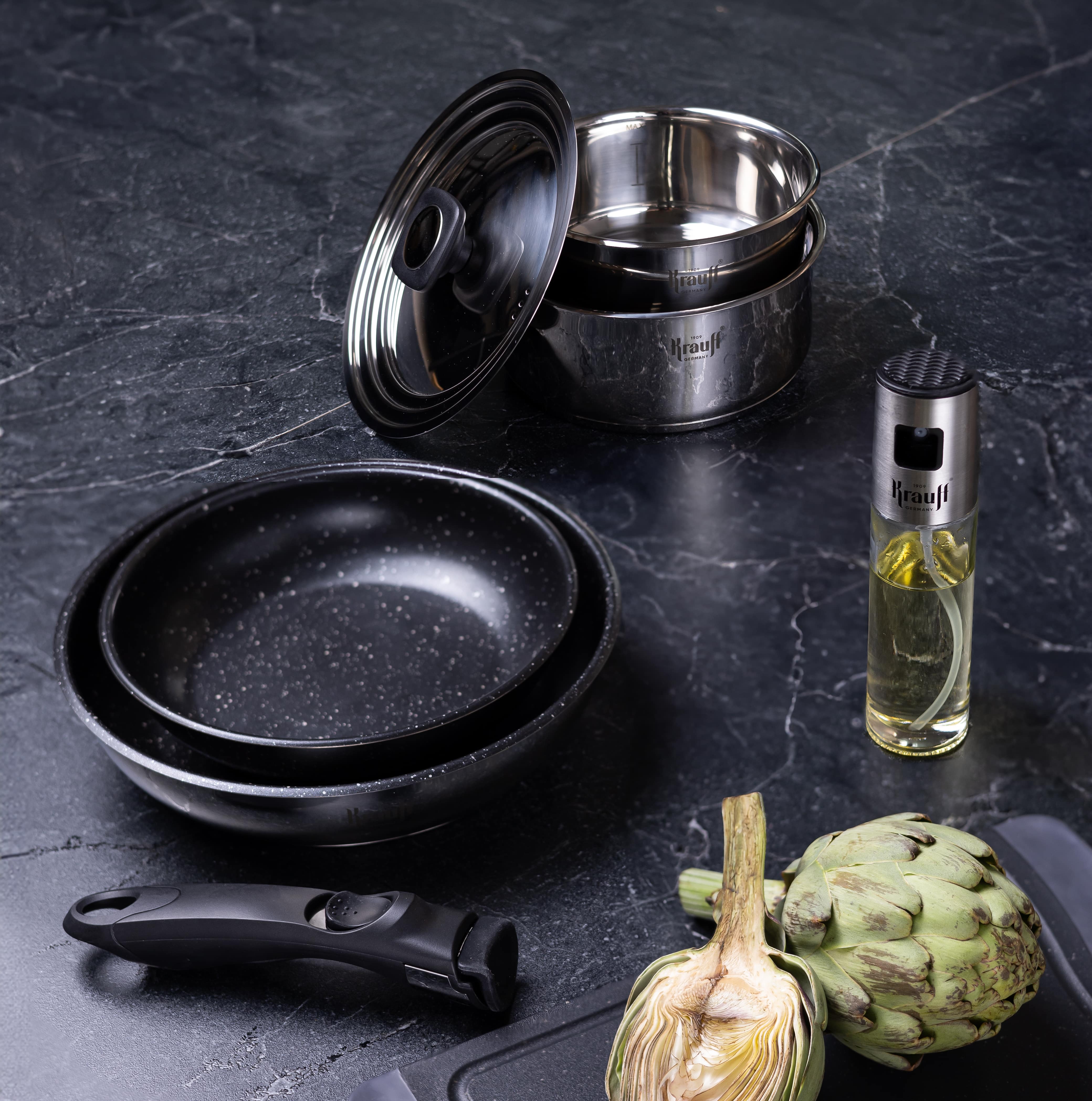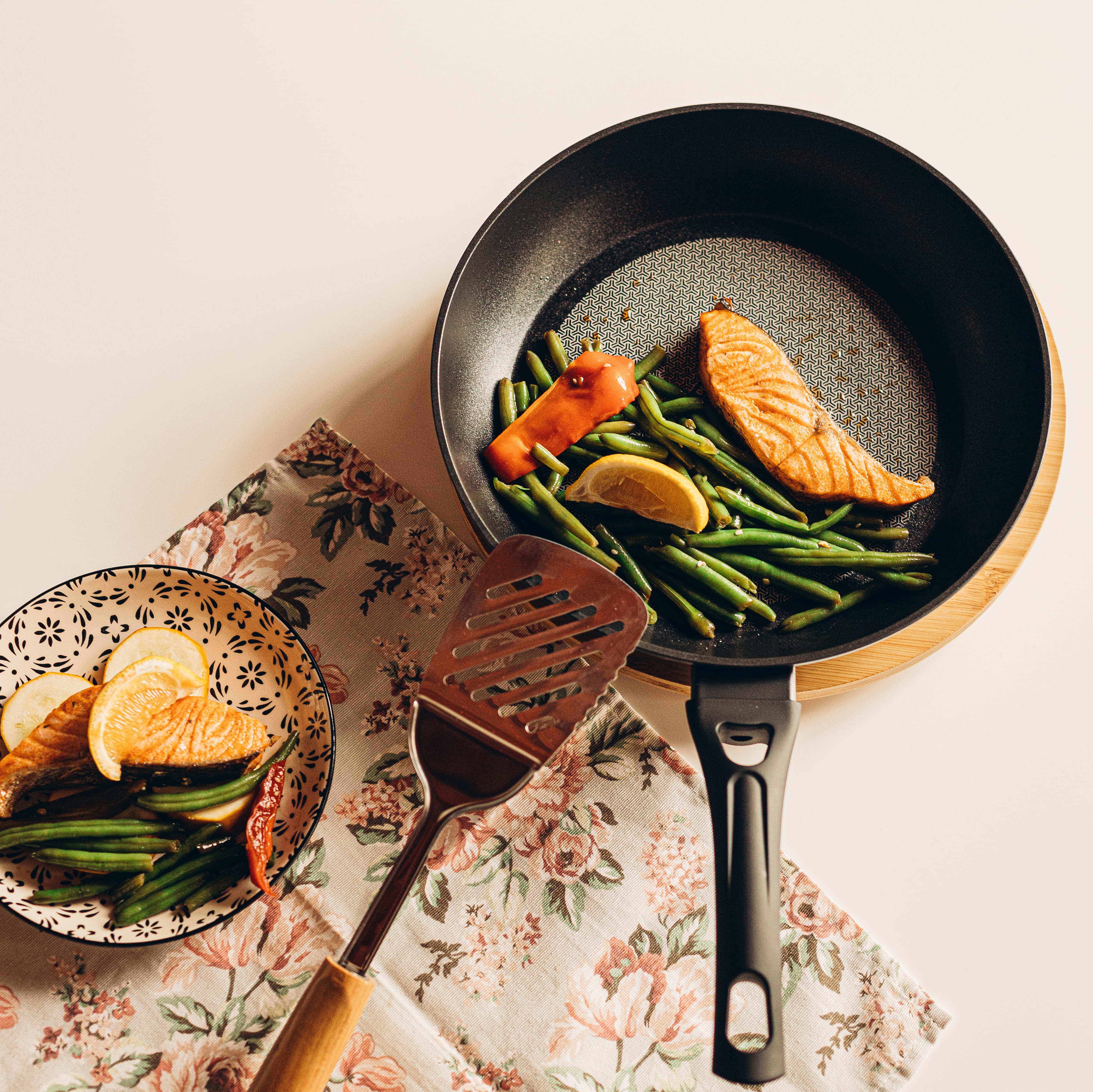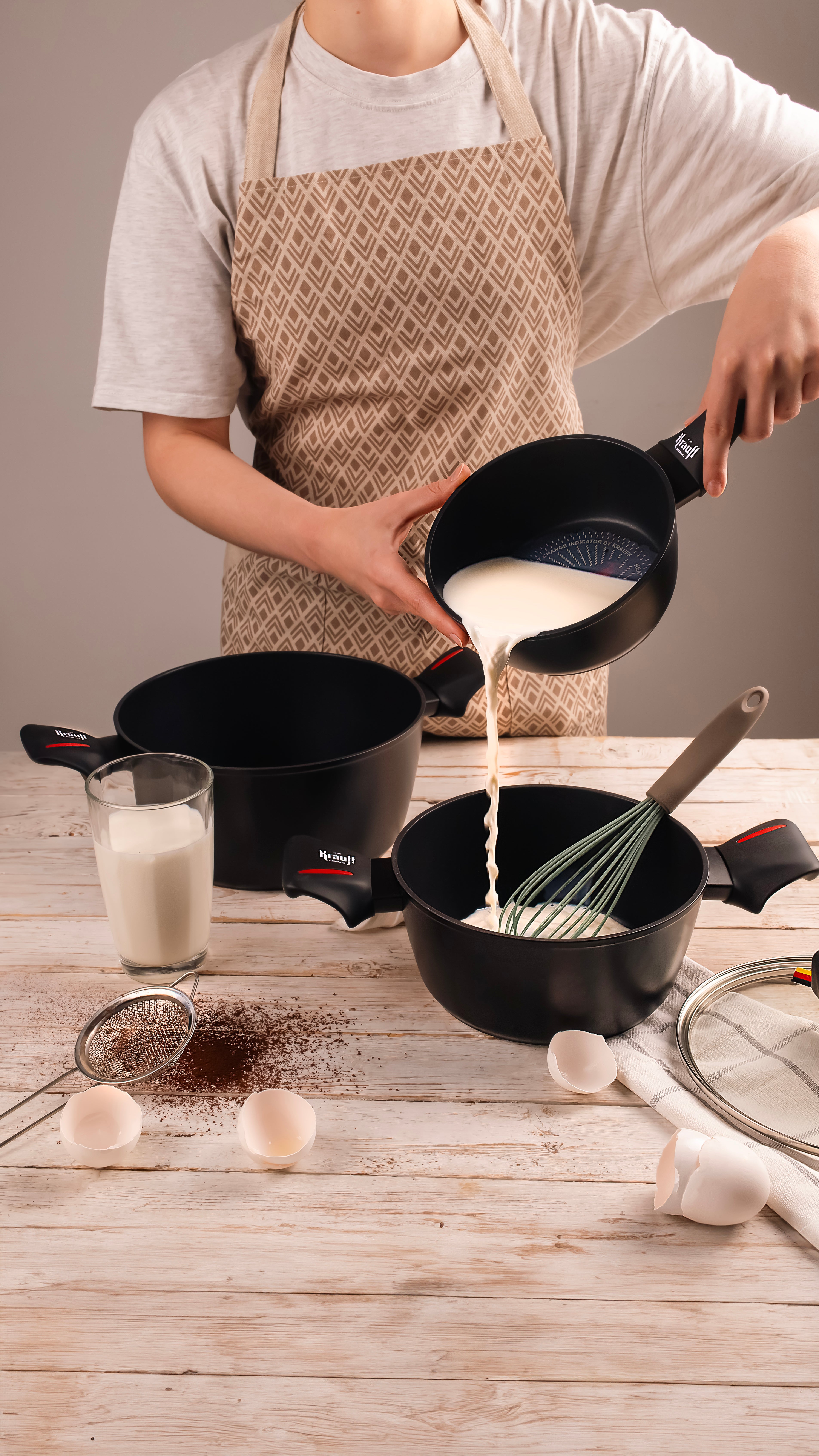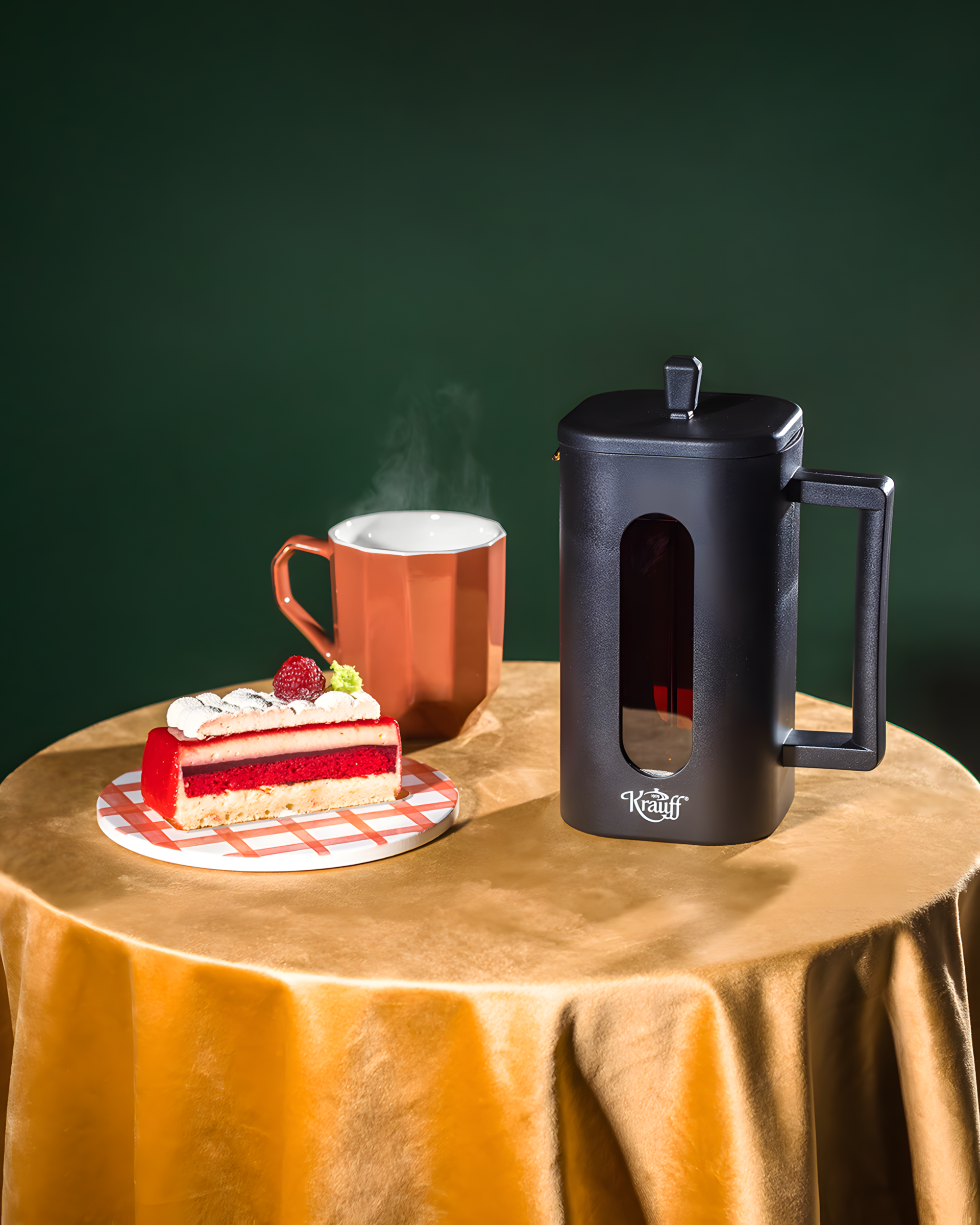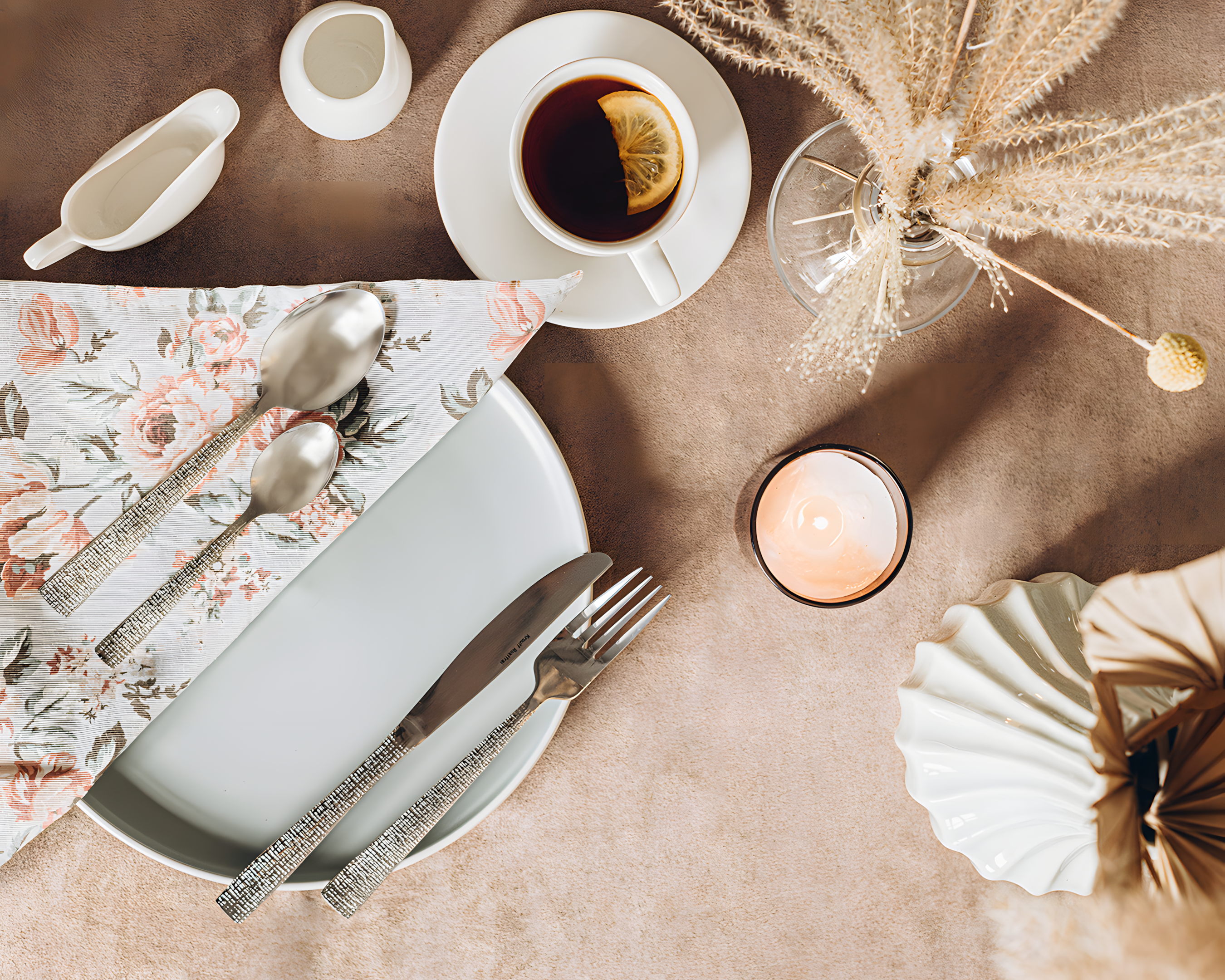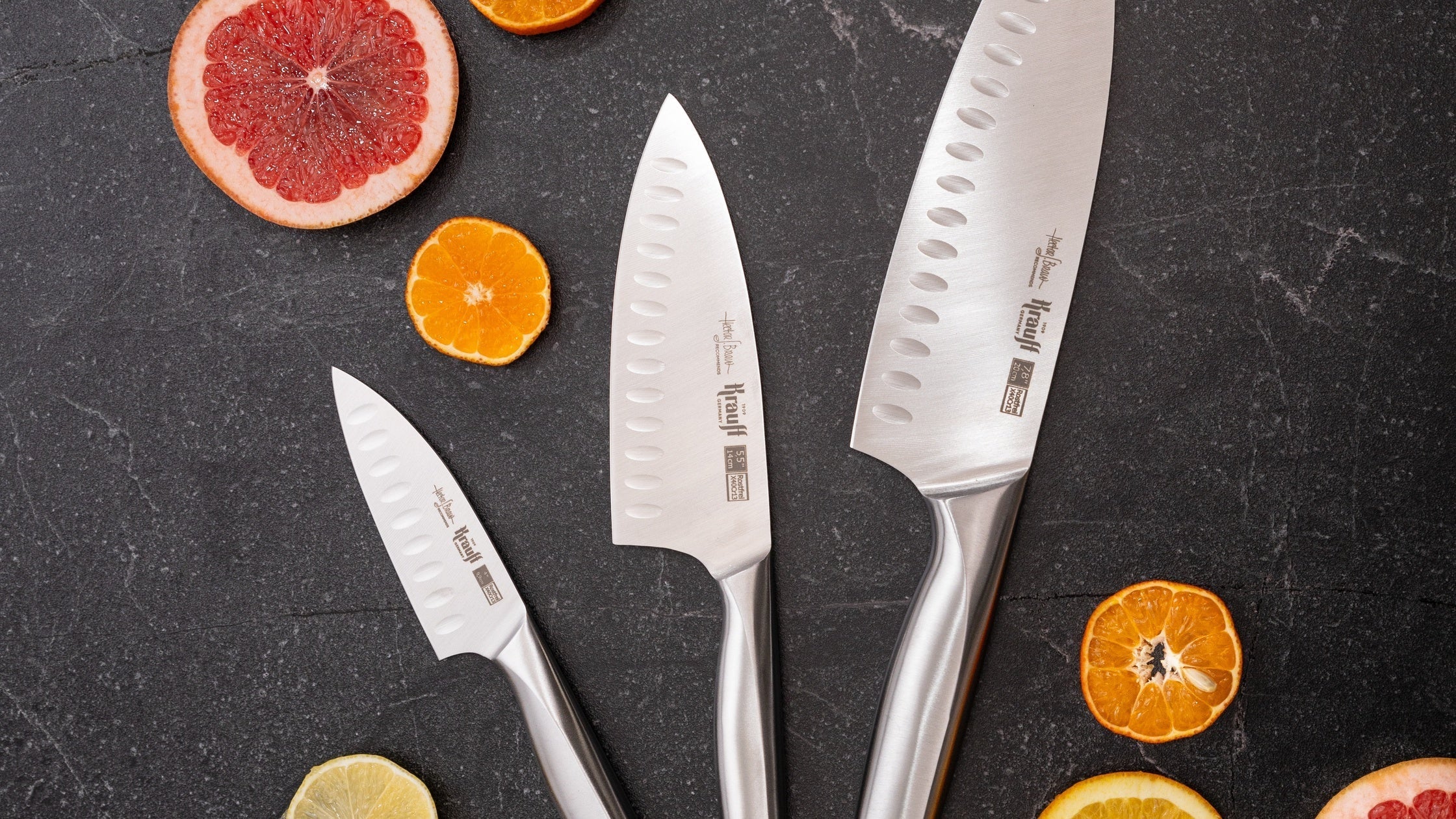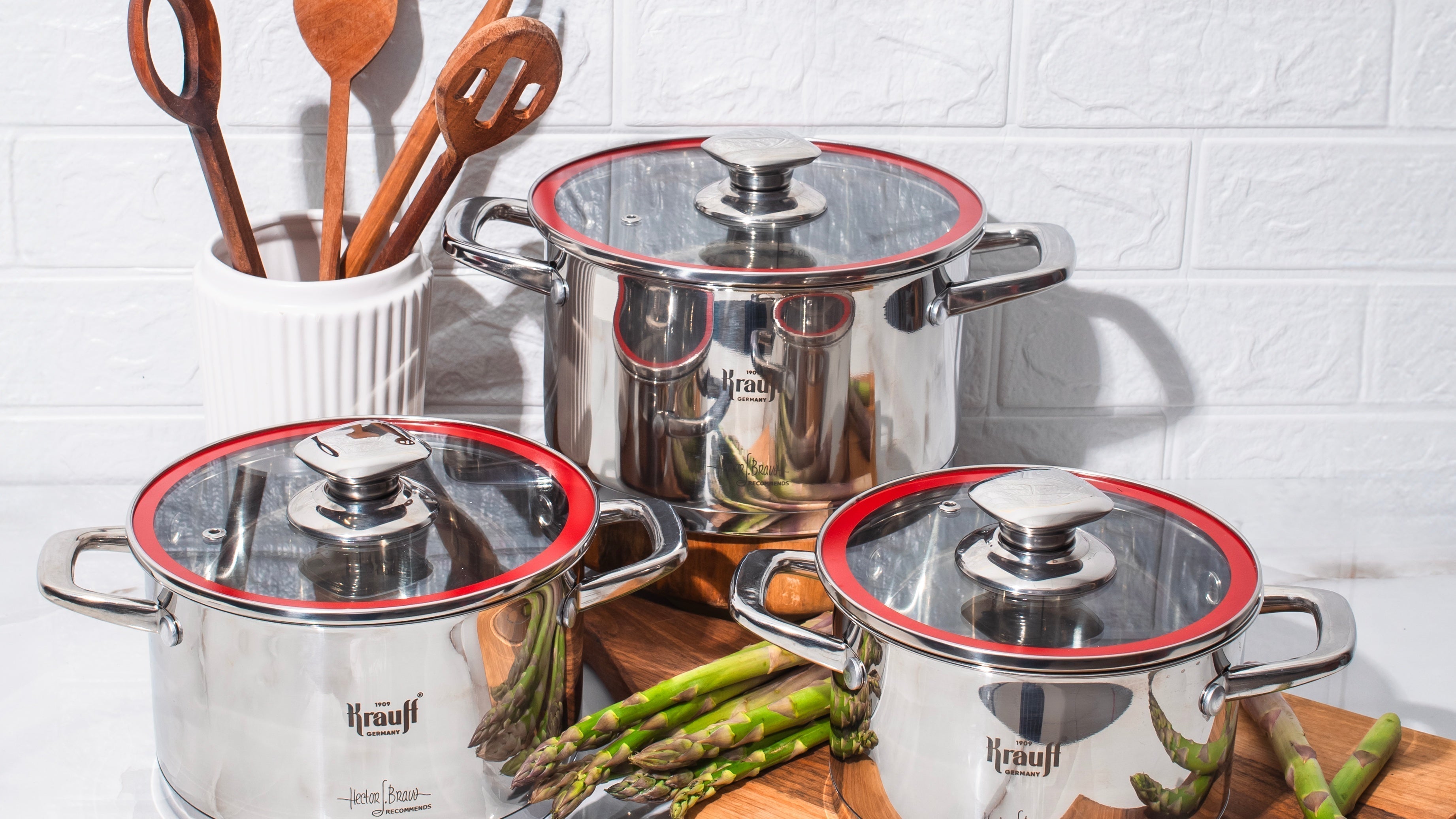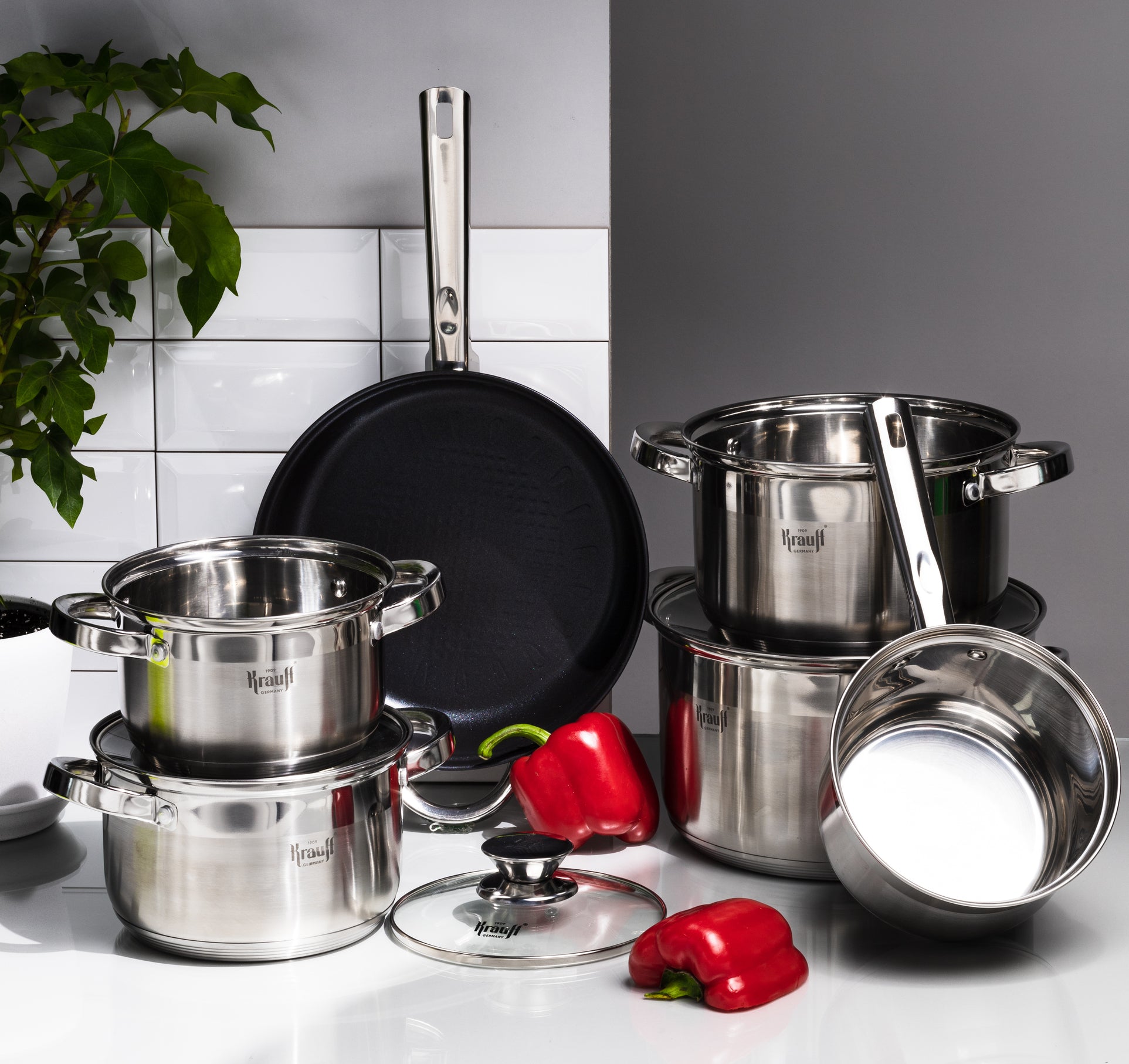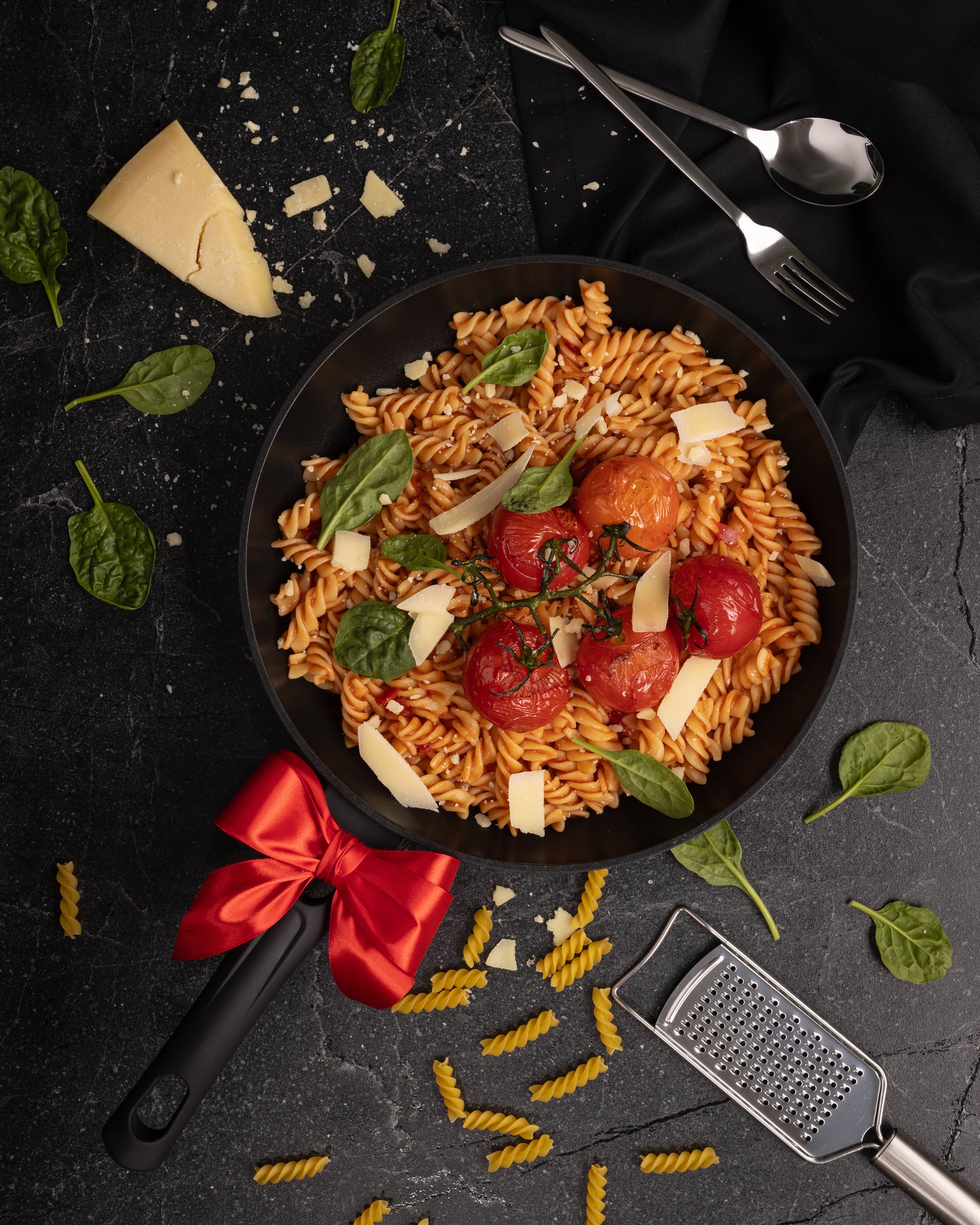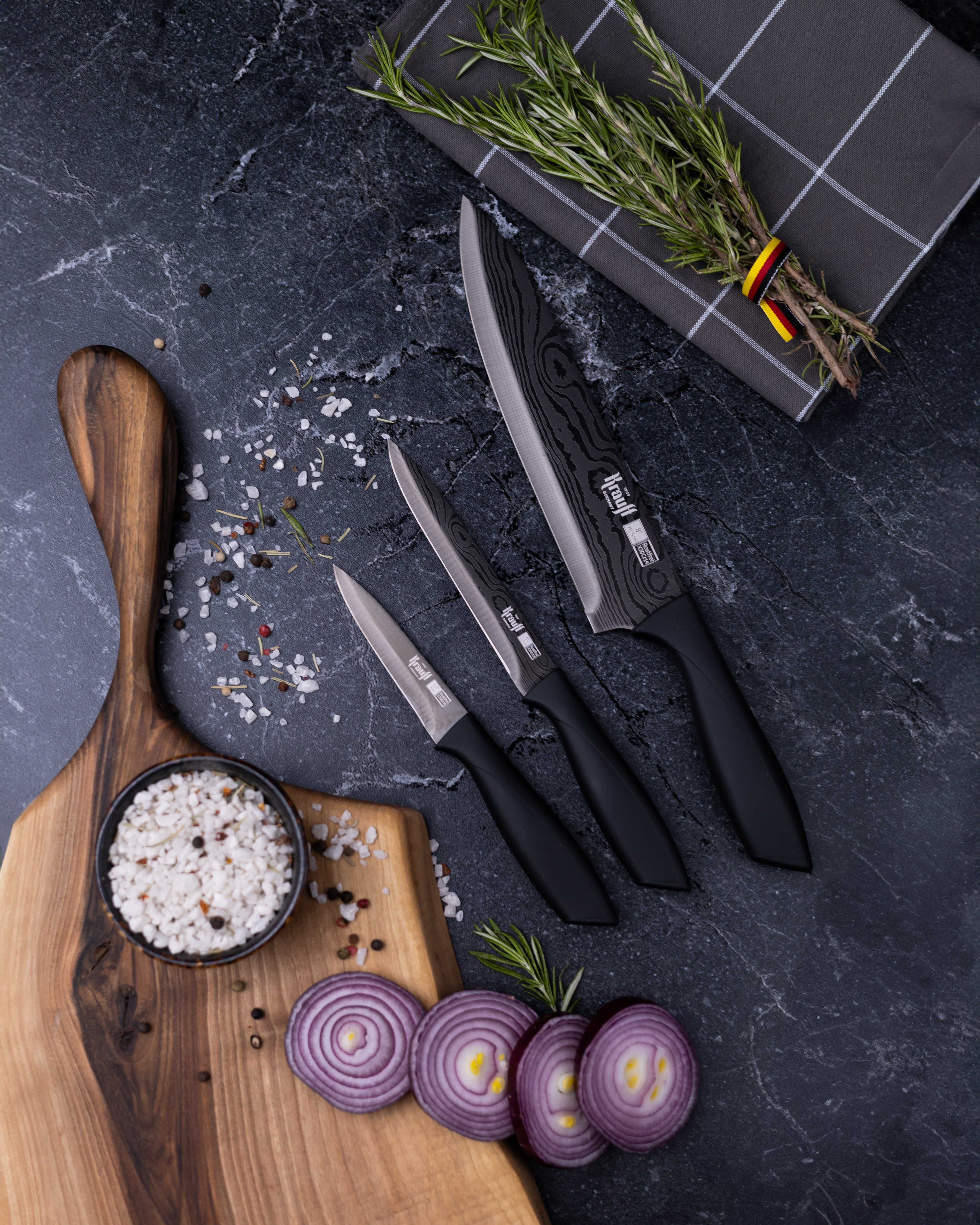
What knives are needed in the home kitchen?
Why you shouldn't buy a "set of 15 knives" without considering it
This is one of the most common mistakes. It looks attractive in the store: an elegant wooden stand with 10-15 knives of various shapes and sizes. But in real life, most of them are rarely or never used. They are either duplicates or specialized knives for tasks that arise once a year.
In addition, in large sets, manufacturers often compromise: to fit the price, they reduce the quality of steel or ergonomics. The result is a beautiful set that is inconvenient to use.
The main guideline is personal comfort. One tool may become a favorite, while another may remain useless, even if it is "professional".
Basic knife set: 3-4 must-haves for every kitchen
There are several universal tasks in the home kitchen: chopping vegetables, peeling something small, cutting bread or meat. And you don't need a dozen different blades for this. It's enough to have 3-4 knives that really work.
1. Chef's knife (18-21 cm) Versatile and indispensable. It is suitable for everything from vegetables to meat. The large blade allows for clear, even movements, and its weight helps with precision. A good chef's knife should be well balanced, not slip in the hand and give a feeling of complete control.
2. Utility knife (12-15 cm) Smaller and lighter than a chef's knife, but no less useful. This is an "everyday" knife: cutting fruit, sandwiches, cheese, sausage. It is convenient to keep on hand for small tasks.
3. Vegetable knife (8-10 cm) Compact, very sharp, convenient for peeling vegetables, removing small elements or making figured cuts. Ideal for fine handwork.
4. A serrated knife. Serrated blades help you easily cut bread, soft vegetables (like tomatoes), and fruits with hard skin. Such a knife does not crush the product, but gently passes through it.
Everything else is optional. For example, a meat knife, a cheese knife - are only needed when you cook these products regularly. In most cases, a basic set is enough to cook comfortably without unnecessary expenses and overflowing drawers. - start with a few basic knives of good quality. Gradually, you can add specialized models if you feel the need. But in most cases, 2-4 well-chosen knives cover all kitchen tasks.

How to choose knives: shape, weight, balance, steel
The same knife can become your favorite - or your worst. It's not just about quality, it's about how well it fits you. To choose a knife that will become an extension of your hand, you should pay attention to several characteristics:
Blade shape. A classic straight blade is suitable for most tasks. A curved blade is for precise movements and a "rocking" effect when cutting. It is important that the blade is high enough so that your fingers do not touch the cutting board while working.
Weight . A chef's knife should be heavier, but balanced. Utility and vegetable knives should be lighter. Choose a weight that doesn't tire your hand, but still allows for control.
Balance. The ideal knife is one whose center of gravity is located between the blade and the handle. Such a tool evenly distributes the load and is comfortable for long work.
Blade material. The most popular is stainless steel. It is resistant to corrosion, easy to care for. Carbon steel is sharper, but requires more careful maintenance. Ceramic is light, does not dull for a long time, but breaks easily.
Handle. Wooden handles are aesthetic, but require care. Plastic and composite handles are the most convenient for daily use. It is important that the handle does not slip in the hand and has a comfortable shape.
How to care for knives so they last a long time
A kitchen knife is not just a tool, it's also an investment. To make it last a long time, stay sharp, and be safe to use, it's important to take proper care of it. It's not difficult - just follow a few simple rules.
Wash knives by hand
Even if the manufacturer states that the knife is dishwasher safe, it is best to avoid doing so. High temperatures, aggressive detergents, and contact with hard objects damage the steel and handle. The ideal option is to wash immediately after use with a soft sponge and warm water, without abrasives.
Always wipe dry
Moisture is the enemy of metal. To avoid stains and corrosion, always dry your knives immediately after washing with a soft towel. Don't leave them in the sink or dryer for long periods of time.
Do not cut on a hard surface.
Glass, stone, and metal cutting boards will wear out the blade faster. It is best to use wooden or plastic cutting boards that absorb movement and do not damage the knife.
Store properly
Never throw knives in a drawer with other utensils. This is dangerous and damages the blade. The best storage options are:
-
wooden or plastic stand;
-
magnetic wall strip;
-
separate divider in the drawer.
Sharpen regularly
A sharp knife is not only convenient, but also safer. A dull knife requires more effort, which increases the risk of cuts. Maintain sharpening with a musat (steel rod) several times a week, and deep sharpen 2-3 times a year or as needed.
Do not use the knife for purposes other than intended.
A kitchen knife is not a can opener, screwdriver, or ice pick. Do not use it to cut frozen foods, open packages, or pick up hard objects - this will damage the blade and disrupt the geometry.
A small practical summary:
-
wash by hand
-
wipe immediately
-
keep separate
-
sharpen regularly
-
to use as intended
These simple habits will significantly extend the life of your knives and maintain their effectiveness. And most importantly, cooking with a sharp, comfortable knife is much more enjoyable.

Krauff knives: for those who value functionality and style
Knives are tools that have to work every day. At Krauff, this principle underlies the design of each model: convenience, reliability, materials that never fail. If you are looking for a tool, not just a kitchen accessory, you should pay attention to several key series.
Quality and convenience
Krauff knives use high-quality stainless steel, which holds its sharpness well and is not afraid of daily stress. Handles made of non-slip materials create a feeling of complete control while cutting. Most models are well balanced - this reduces the load on the hand during work.
Krauff main lines:
-
MasterChef - universal knives with perfect balance, suitable for both beginners and those who cook a lot and regularly.
-
Wikinger - massive, reliable knives with character. Well suited for working with meat and large products.
-
Smart Chef - modern, lightweight, practical knives with thoughtful ergonomics and a stylish look for everyday tasks.
Formats and sets
Krauff offers both individual knives and sets of 3-5 pieces. Sets often include stands - a practical solution for yourself or as a gift.










